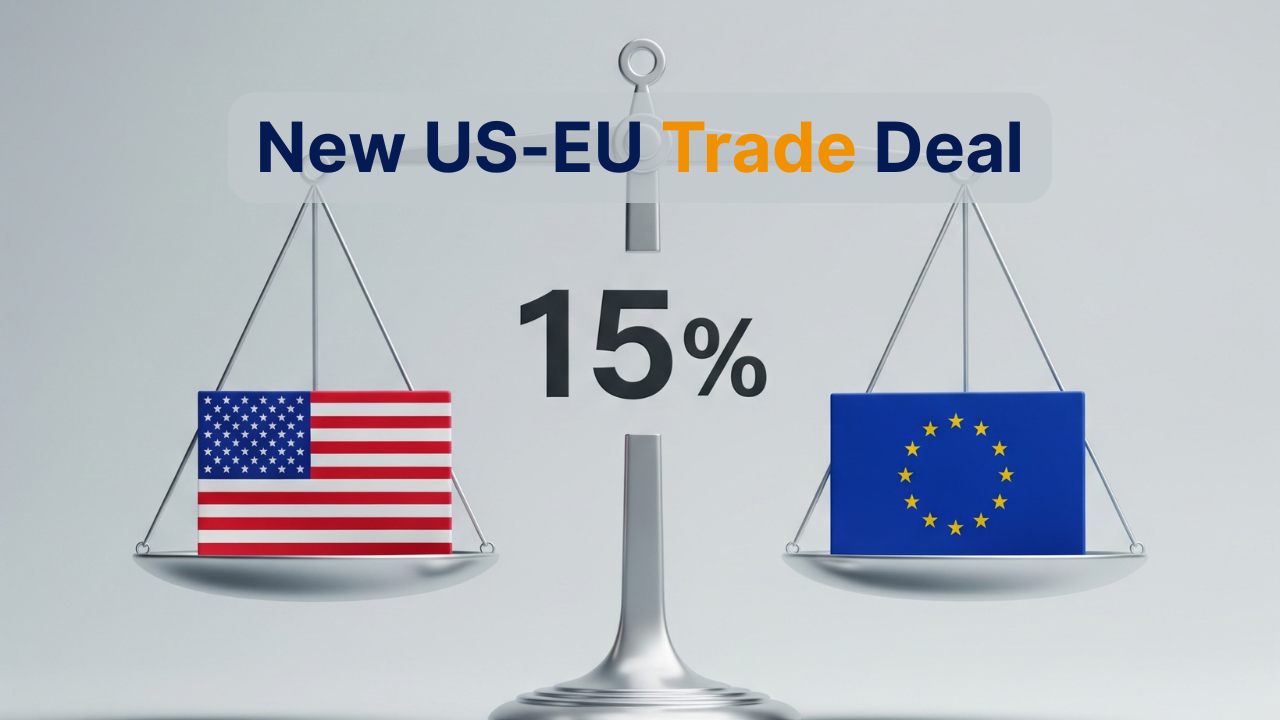
In a significant meeting at the Trump Turnberry resort in Scotland on July 27, 2025, European Commission President Ursula von der Leyen and President Donald Trump announced a landmark tariff agreement. This deal, which President Trump described as "the biggest ever made," introduces a new trade framework between the United States and the 27 EU member states.
Under the new agreement, EU exports to the U.S. will now incur a 15% baseline tariff. This rate is lower than earlier discussions of 20% or even 30% but remains higher than the UK’s negotiated 10% rate.
For U.S. importers and global logistics teams, the core updates include:
- Autos: Tariffs on European automobiles will decrease from 27.5% to 15%. This offers immediate relief for automotive manufacturers and parts importers.
- Steel: The existing 50% tariff on EU steel remains in place. This unchanged rate continues to exert pressure on construction and manufacturing supply chains.
- Aerospace: Both sides agreed to eliminate tariffs on airplanes and airplane components, facilitating smoother operations for aviation suppliers.
- Semiconductors & Alcohol: Tariff statuses for these categories require further clarification, indicating potential for cost volatility.
- Defense & Energy: Europe committed to substantial procurement of U.S. military equipment (unspecified quantity) and $750 billion in American energy products over the next three years. Additionally, $600 billion in European investment is anticipated to flow into the U.S. economy.
"This is the best we could achieve," stated President von der Leyen, emphasizing the necessity for stability and predictability following months of tariff threats and shifting terms.
While official documentation is pending, businesses should anticipate further details to be released this week.
Why This Agreement Matters for Shippers and Importers
This new agreement offers a period of stability for transatlantic trade flows. However, it also establishes a new baseline cost structure for EU-origin goods. This necessitates strict cost management, updated landed cost models, and precise freight auditing.
Companies managing shipments to or from Europe should immediately:
- Recalculate Landed Costs: Adjust total landed cost calculations using the new 15% tariff baseline.
- Review Contracts & Incoterms: Examine existing contracts and Incoterms to ensure tariff costs are accurately assigned.
- Monitor Pending Tariffs: Track updates on tariffs for semiconductors and alcohol to assess cost exposure.
- Track Implementation: Closely monitor implementation timelines for Q4 2025 planning and 2026 forecasting.
-
How BlueCargo Can Support Your Adjustments
Whether you are a U.S. importer managing a European vendor base or a European exporter with U.S. distribution centers, BlueCargo’s AI-powered freight audit platform empowers teams to adapt in real time. Our platform identifies hidden overcharges and recalculates invoice-level tariff impacts, providing clear visibility to adjust quickly and protect profit margins.
Need assistance adjusting your cost structure following the new EU tariffs?
👉 Book a strategy call with our team.
----


